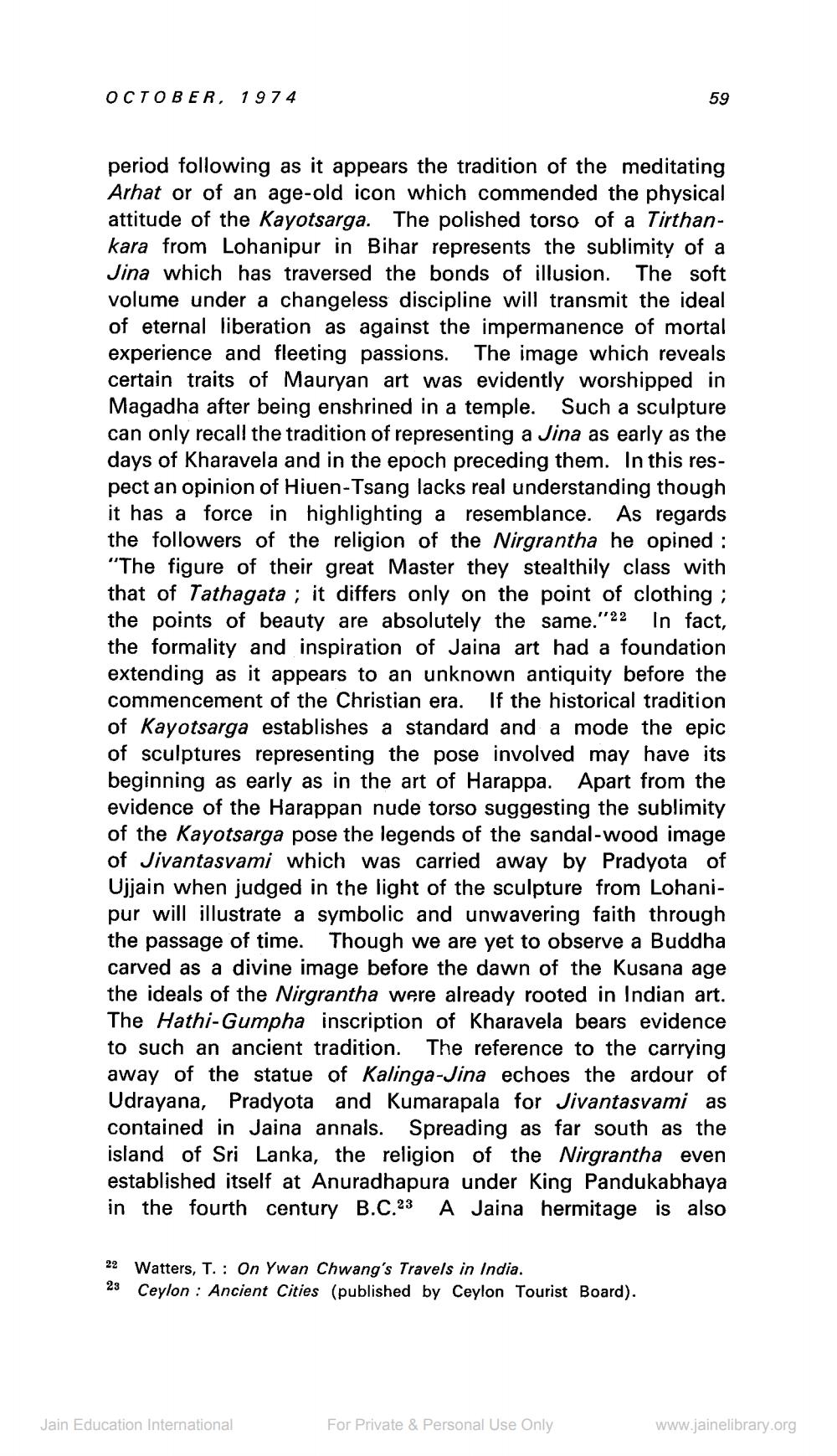________________
OCTOBER, 1974
period following as it appears the tradition of the meditating Arhat or of an age-old icon which commended the physical attitude of the Kayotsarga. The polished torso of a Tirthankara from Lohanipur in Bihar represents the sublimity of a Jina which has traversed the bonds of illusion. The soft volume under a changeless discipline will transmit the ideal of eternal liberation as against the impermanence of mortal experience and fleeting passions. The image which reveals certain traits of Mauryan art was evidently worshipped in Magadha after being enshrined in a temple. Such a sculpture can only recall the tradition of representing a Jina as early as the days of Kharavela and in the epoch preceding them. In this respect an opinion of Hiuen-Tsang lacks real understanding though it has a force in highlighting a resemblance. As regards the followers of the religion of the Nirgrantha he opined: "The figure of their great Master they stealthily class with that of Tathagata; it differs only on the point of clothing; the points of beauty are absolutely the same."22 In fact, the formality and inspiration of Jaina art had a foundation extending as it appears to an unknown antiquity before the commencement of the Christian era. If the historical tradition of Kayotsarga establishes a standard and a mode the epic of sculptures representing the pose involved may have its beginning as early as in the art of Harappa. Apart from the evidence of the Harappan nude torso suggesting the sublimity of the Kayotsarga pose the legends of the sandal-wood image of Jivantasvami which was carried away by Pradyota of Ujjain when judged in the light of the sculpture from Lohanipur will illustrate a symbolic and unwavering faith through the passage of time. Though we are yet to observe a Buddha carved as a divine image before the dawn of the Kusana age the ideals of the Nirgrantha were already rooted in Indian art. The Hathi-Gumpha inscription of Kharavela bears evidence to such an ancient tradition. The reference to the carrying away of the statue of Kalinga-Jina echoes the ardour of Udrayana, Pradyota and Kumarapala for Jivantasvami as contained in Jaina annals. Spreading as far south as the island of Sri Lanka, the religion of the Nirgrantha even established itself at Anuradhapura under King Pandukabhaya in the fourth century B.C.23 A Jaina hermitage is also
22 Watters, T.: On Ywan Chwang's Travels in India.
23 Ceylon Ancient Cities (published by Ceylon Tourist Board).
Jain Education International
59
For Private & Personal Use Only
www.jainelibrary.org




